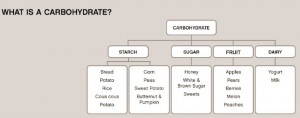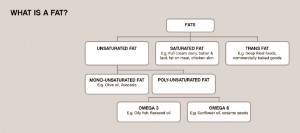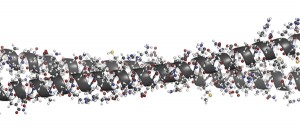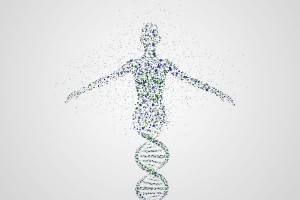Stubborn Belly fat
Why spend 5 hours in the gym? Imagine achieving your optimal MET (metabolic equivalent) taking the dog for a walk?!
Our laboratory DNA test analyses 4 genes that have been clinically proven to affect your response to diet and exercise.
Stubborn fat e.g. belly fat is a different kind of fat. The result of our DNA Diet may help you. Here’s how:
Is it safe?
YOU GAIN sensible advice so you won’t sacrifice important nutrients or indeed your own time by exercising unnecessarily.
Why are we storing fat around our middle, stubborn fat around our thighs, our hips or upper arms? Stubborn belly fat is a different kind of fat that leads to all kinds of health complications. Taking this DNA test doesn’t just highlight WHY diets have failed us in the past….
Feeling discomfort, low in energy, lacking confidence that comes with stubborn fat and being tired all the time?
DNA Test For Weight Loss
DNA Diet Test analyses for healthy weight loss at Susannah Makram Clinics gives clear:
(1) % values for optimal fats, carbs, proteins to consume daily for healthy weight loss.
(2) Suggestion for which proteins, carbs, fats you should consume daily for your healthy weight loss
(3) Clear instructions on how to achieve your optimal MET on a day by day, week by week basis
Our genes might hold the key to understanding why diets have failed in the past. We call the study of how this works epigenetics.
Why take the DNA Diet Test for Weight Loss at Susannah Makram Clinics
From your buccal swab sample we have used a process, called the Polymerase Chain Reaction (PCR). This copies the DNA of your genes many times over. This means we can generate sufficient quantities to analyse your genetic material. This is not uncomfortable at all and is all over very quickly!
The DNA Diet test for weight loss lets us identify unique DNA sequences in some of your genes. You get these results within 7-10 working days in hard copy or email, however you prefer to receive them.
Identifying unique DNA sequences
Certain changes (polymorphisms) in these genes have been studied in detail. Evidence correlates these polymorphisms with your weight management and response to specific food. See these in your DNA Test For Weight Loss Results. (e.g. below)
- The term ‘Buccal swab’ refers to a DNA collection process involving cells taken from the cheek (from the inside mouth area).
- Buccal Swabs are sterile. Therefore, it is essential to preserve a sterile test environment. They are produced for medical use. Unless you are allergic to cotton, they should not cause an irritation.
- An advantage of a Buccal swab is that it allows you to take a DNA sample, in a non invasive way, that is accurate.
- Buccal swabs should be taken when your mouth is empty. It is best if you swallow first, then swab the inside of your cheek for approximately 30 seconds. The feel is an impression as hard as if you were brushing your teeth.
- Having a cold should not cause contamination or interferences to your Buccal Swab Sample of DNA testing
Your DNA Test For Weight Loss Results Explained
Not only will the test determine the percentage quantity of fat, protein and the amount of carbohydrate you should be eating but also the type of fat exactly and what type of carbohydrate exactly.
Four primary diet and lifestyle factors
i) exercise, ii) obesity risk, iii) sensitivity to carbohydrates and iv) sensitivity to saturated fats.
Your DNA Test For Weight Loss makes a complete assessment of weight management, both environmental factors (diet and lifestyle) and previous medical history need to be considered in conjunction with the accompanying genetic profile.
Only gene variants that have a beneficial, moderate or high impact on metabolic processes are analysed. These are described in detail in your report. Your report is delivered to you once the laboratory investigation on your buccal swab test has been processed. These gene variants will have impact or a mild impact to your personalised nutrition. The required alteration or tweaking is made to your Naturopathic Portfolio
Gene Name for each Area of Activity is reported. The areas of activity of interest in the DNA Test for Weight Loss are:
Metabolism and Absorption FABP2 Ala54Thr PPARG Pro12Ala ADRB2 Arg16Gly ADRB2 Gln27Glu APOA5 T>C
Fat metabolism, obesity and satiety APOA2 -265 T>C
Regulation of metabolism and feeding behaviour MC4R T>C
Insulin sensitivity and regulation of energy intake FTO T>A TCF7L2 C>T
Exercise responsiveness ADBR3 Trp64Arg
Circadian rhythms CLOCK T>C
Fat storage PLIN G>A
Inflammation TNFA -308 G>A
Taste sensitivity TAS1R2 SLC2A2 (encoding GLUT2)
Addictions and Overeating DRD2
Genetic variations for each named gene are stated. Your Results and Gene Impact are in printed out for you in the list above.
Each gene tested has an impact score in your DNA Weight Loss Report
NO IMPACT
LOW IMPACT
MEDIUM IMPACT
HIGH IMPACT
These results are only a guideline. You are as unique as your DNA. Eat. Drink. Take. Make. Your Naturopathic Portfolio is Safe, Clinical, Practical, Effective.







